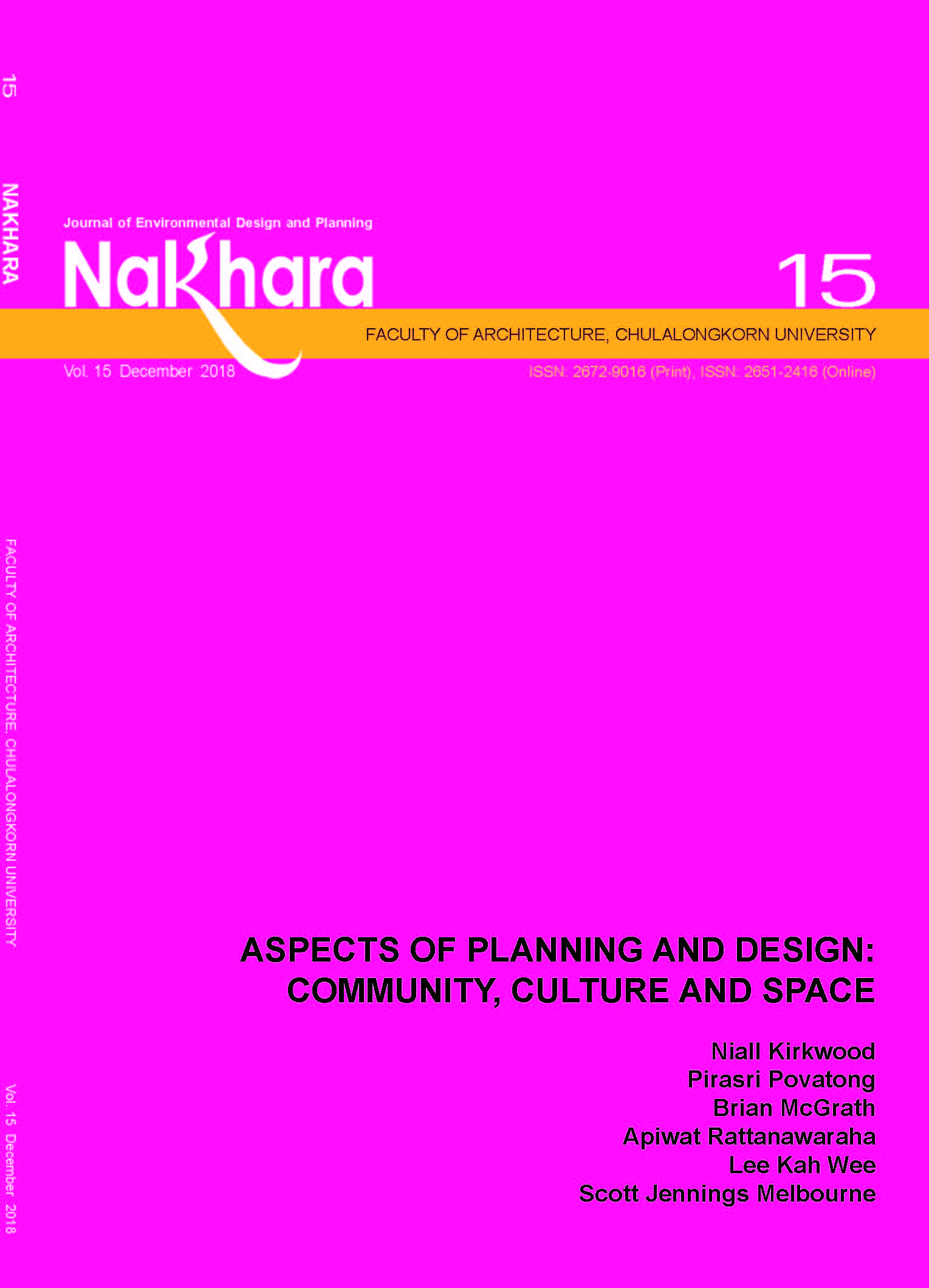A Study on the Relationship of Spatial Planning Aspects in Occurrence of Street Crimes in Dhaka City
Main Article Content
Abstract
Street crime, like mugging and vehicle theft, are the significant crime problems in every developing city of the world. The study area for this research is Dhaka city, which is experiencing an situation of increasing street crime. This research focuses on the relationship between spatial planning and street crimes and tries to recommend different strategies for prevention of crime and violence in the streets of Dhaka city by proposing urban design and infrastructure planning. The study tries to assess the relationship from macro to micro level through different spatial and physical planning components. For the detail level study, four Thana (police station) areas have been selected from Dhaka City Corporation area (DCC) according to their physical layout and other characteristics. In this level, the relationship is studied through the association between spatial layout and different physical planning factors like land use along with some elements of streetscape. Space Syntax methodology was applied to assess the impact of spatial configuration in occurrence of street crime with the selected four study area. In the micro level the study reveals that different types of land use with different design elements lead to change in public activity spaces which have impact on occurrence of street crimes. For the overall research the street crime data (both macro and micro level) of mugging and vehicle theft were collected from the police authority and some insecure places are identified by the local people through field survey. It is expected that the outcome of this research will unveil the impacts of spatial planning on occurrence of street crimes in a city.
Article Details

This work is licensed under a Creative Commons Attribution-NonCommercial-NoDerivatives 4.0 International License.
References
BBS. (2007). Dhaka zilla census report 2001. Dhaka: BBS.
Baran, P. K., Smith, W. R., & Toker, U. (2007). The Space Syntax and crime: Evidence from a suburban community. In Proceedings from The 6th International Space Syntax Symposium, Istanbul.
Beavon, D. J. K., Brantingham, P. L., & Brantingham, P. J. (1994). The influence of street networks on the patterning of property offenses. In R. V. Clarke (Ed.), Crime Prevention Studies, Vol II (pp. 149-163). New York: Willow Tree Press.
Brunsdon, C., Gilroy, R., Pour, A. M., Roe, M., Thompson, I., & Townshend, T. (1995). Safety, crime, vulnerability and design - a proposed agenda of study. Electronic working paper no. 20. n.p.: School of Architecture, Planning & Landscape. Global Urban Research Unit. University of Newcastle upon Tyne.
Chowdhury, U. (2012). The influence of spatial configuration in occurrence of street crime in Dhaka City. Jahangirnagar University Planning Review, 10, 105-118.
Chowdhury, U. (2013, July). Spatial distribution of street crime occurrences in Dhaka City. The AUST Journal of Science & Technology, 3(I-2), 22-36.
DAP. (2004). Group-C final report: Preparation of Detailed Area Plan (DAP) for DMDP Area. n.p.: RAJUK.
Fanek, M. F. (1997). The use of space syntax methodology in predicting the distribution of crime in urban environments (Doctoral dissertation).Texas Tech University, USA.
Henry, L. M., & Bryan, B. A. (2000). Visualising the spatio-temporal distribution of motor vehicle theft in Adelaide, South Australia. Crime mapping: Adding value to crime prevention and control. Australian Institute of Criminology and National Key Centre for Social Applications of GIS. Adelaide: n.p.
Hillier, B. (1996). Cities as movement economies. In Space is the machine: A configurational theory of architecture (pp. 111-137). Cambridge: Cambridge University Press.
Hossain, S. (2006, December). Social characteristics of a megacity: A case of Dhaka City, Bangladesh. TASA Conference 2006. Paper presented at 2006 TASA conference co-hosted by University of Western Australia & Murdoch University, University of New South Wales, Australia.
Islam, M. S. (2007). Physical density and urban sprawl: A case of Dhaka City (Master's thesis).Built Environment Analysis, Department of Urban Planning and Environment Kungliga Tekniska Högskolan (KTH), KTH Architecture and the Built Environment, Stockholm.
Jacobs, J. (1961). The death and life of great American cities. New York: Vintage Books.
Kruger, T. (2005). Building safer communities – reducing crime through environmental planning and design, In XXXIII IAHS. World Congress on Housing Transforming Housing Environments through Design. Pretoria, South Africa.
Liggett, R., Loukaitou-Sideris, A., & Iseki, H. (2004). Protecting against transit crime: The importance of the built environment. In California Policy Options. Los Angeles: UCLA School of Public Affairs.
Long, Y., & Baran, P. K. (2006, May). Spatial configuration and actual crime locations in a university campus setting. In EDRA37. Atlanta.
Sarkar, M. M. H. (2008). Ramna Thana. In Banglapedia, National Encyclopedia of Bangladesh. Bangladesh: Asiatic Society of Bangladesh.
Tawhid K. G. (2004). Causes and effects of water logging in Dhaka City (Master's thesis). Department of Land and Water Resource Engineering, Royal Institute of Technology (KTH), Stockholm.

